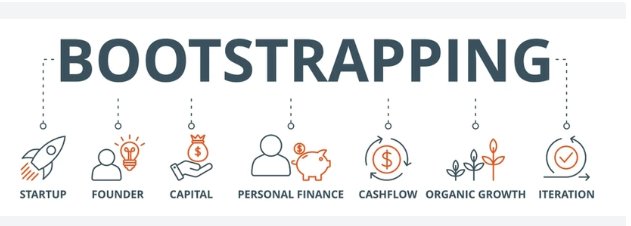Starting a Business on a Tight Budget: The Bootstrapper's Guide
Bootstrap: a term often used in the world of startups and entrepreneurship. But what does it mean, and why is it so important? In this blog post, we'll explore the concept of bootstrapping, its advantages and challenges, and how it can be a powerful strategy for building a startup from the ground up.

Bootstrap: a term often used in the world of startups and entrepreneurship. But what does it mean, and why is it so important? In this blog post, we'll explore the concept of bootstrapping, its advantages and challenges, and how it can be a powerful strategy for building a startup from the ground up.
What is Bootstrapping?
Bootstrapping is the process of starting and growing a business with little to no external funding or investment. It's about relying on your own resources, revenue generated by the business, and a mindset of frugality and self-sufficiency. In essence, bootstrapping means pulling yourself up by your own bootstraps, hence the name.
Advantages of Bootstrapping
- Independence: When you bootstrap your startup, you maintain complete control over your business. You make the decisions without external pressures or demands from investors.
- Financial Discipline: Bootstrapping forces you to be financially disciplined from day one. You have to manage resources carefully, which often leads to a leaner and more efficient operation.
- Focus on Value: Since you have limited resources, you're compelled to focus on delivering value to your customers quickly. This customer-centric approach can lead to a more successful and sustainable business.
- Profitability: Bootstrapped startups prioritize becoming profitable as soon as possible. This financial self-sufficiency can provide stability and long-term sustainability.
- Challenges of Bootstrapping
- Limited Resources: The most significant challenge of bootstrapping is the limited capital available for growth and expansion. This can slow down the pace of development and market entry.
- Scaling Difficulty: Scaling a bootstrapped business can be more challenging than one with access to significant external funding. Expansion may require a longer timeframe.
- Competing with Funded Startups: Bootstrapped startups often compete with well-funded competitors. This can be a disadvantage in terms of marketing, resources, and reach.
- Personal Sacrifices: Founders may need to invest their own savings or forgo a salary for a period of time, which can lead to personal financial strain.
Strategies for Successful Bootstrapping
- Focus on Revenue: Generate revenue from day one. Prioritize sales and customer acquisition to sustain your business.
- Lean Operations: Keep your costs as low as possible. Avoid unnecessary expenditures and be mindful of your cash flow.
- Leverage Your Network: Use your personal and professional network to access resources, advice, and potential customers.
- Continuous Learning: Be prepared to wear multiple hats and constantly learn new skills. Adaptability is key in a bootstrapped environment.
- Profitable Growth: Instead of chasing rapid growth at any cost, aim for sustainable and profitable growth. Reinvest profits wisely.
Conclusion
Bootstrapping is not the right approach for every startup, but for those willing to embrace its challenges and benefits, it can be a path to self-reliance and long-term success. Bootstrapped startups like Basecamp, MailChimp, and GitHub have shown that it's possible to build thriving businesses without relying on external funding.
The bootstrapping journey may be tough, but it fosters resilience, resourcefulness, and a deep understanding of your business. So, if you have a startup idea and the determination to see it through, consider the bootstrap route—it might be the key to building a strong foundation for your entrepreneurial dreams

 Ragini Tripathi
Ragini Tripathi 






















